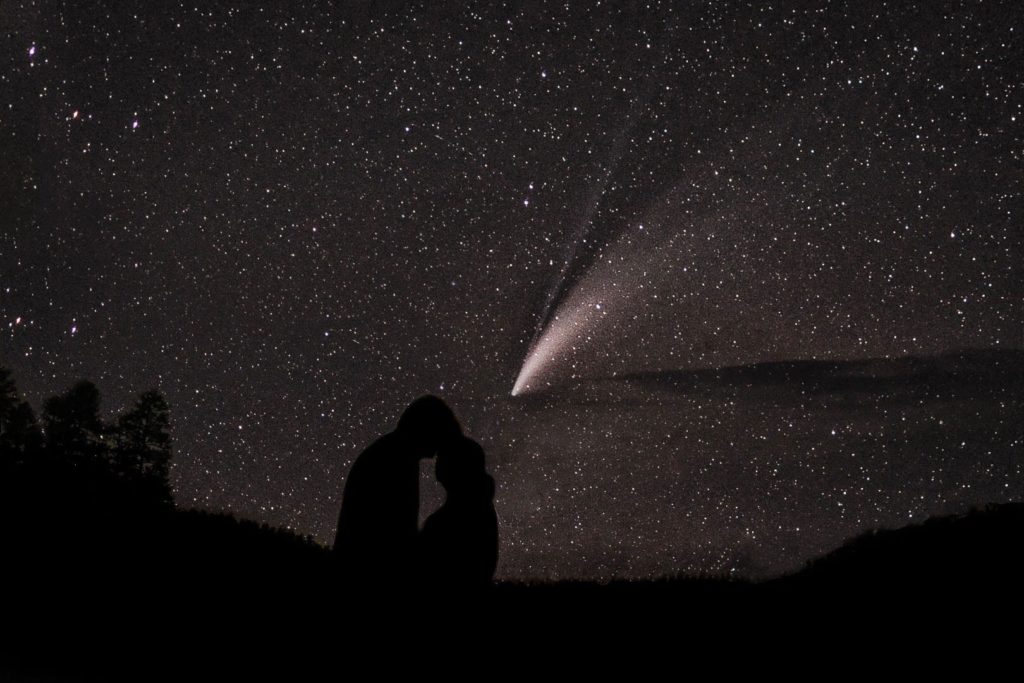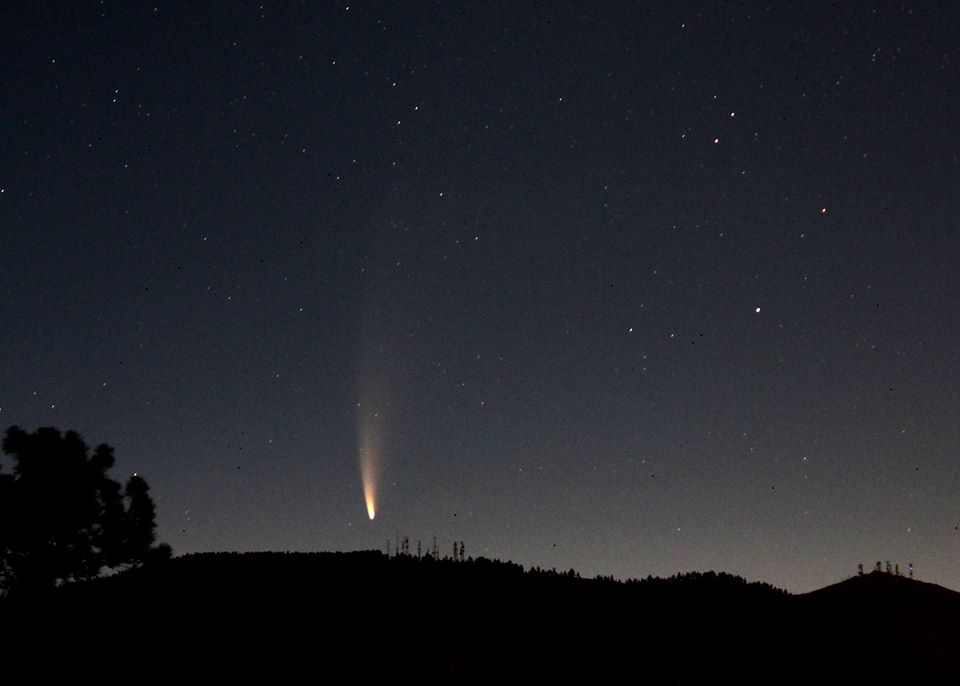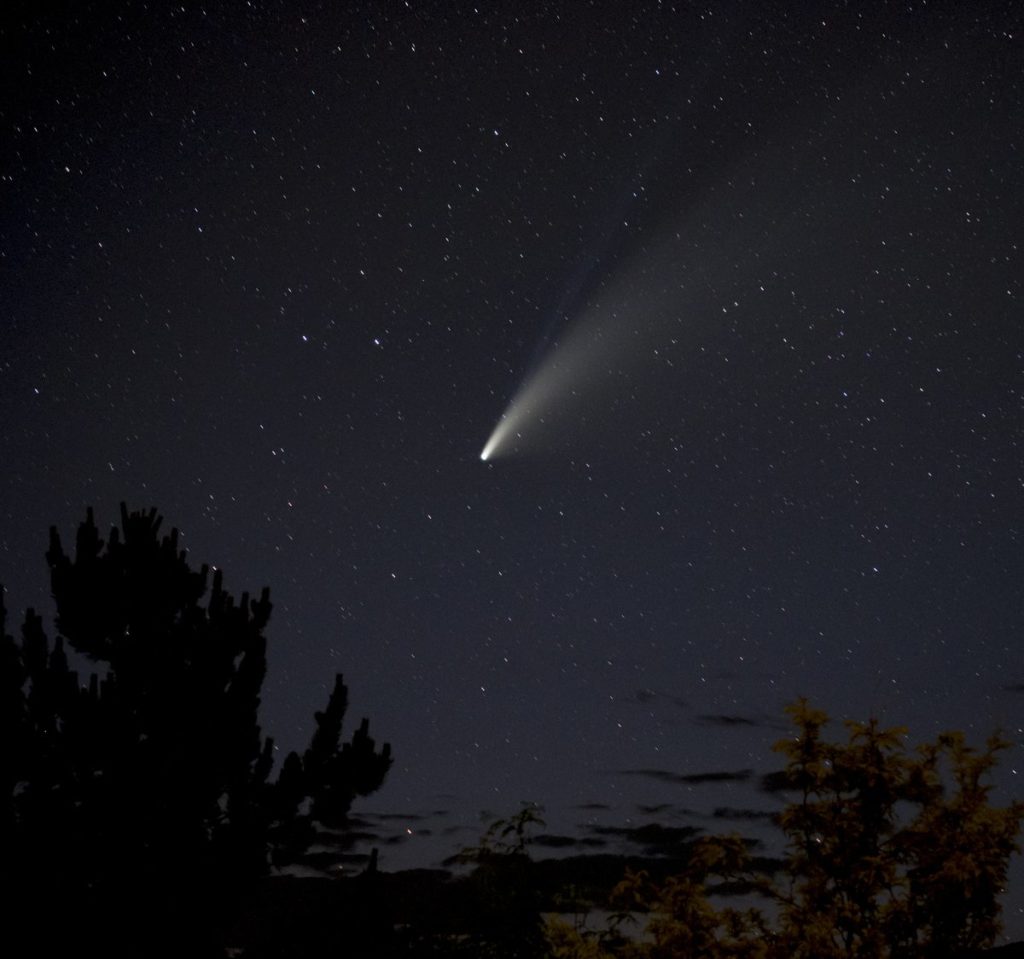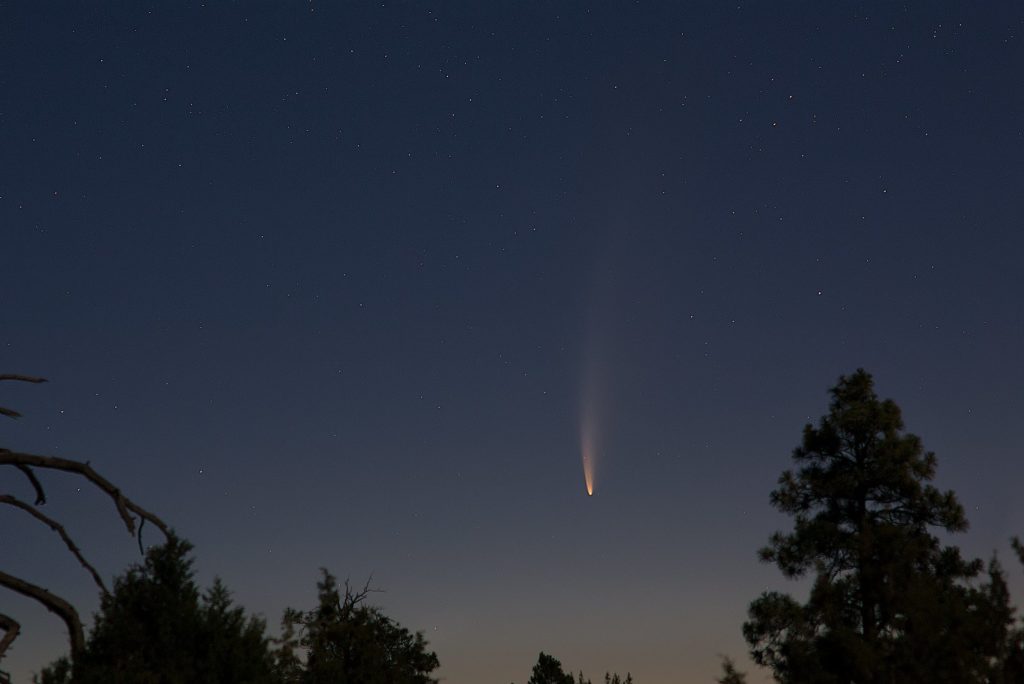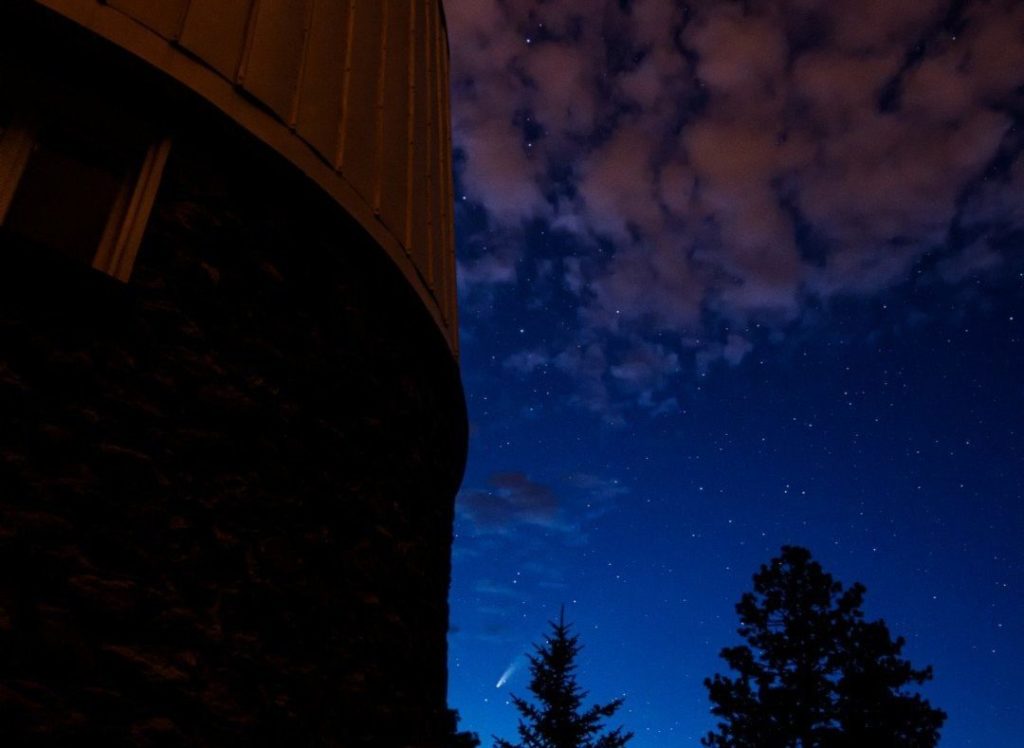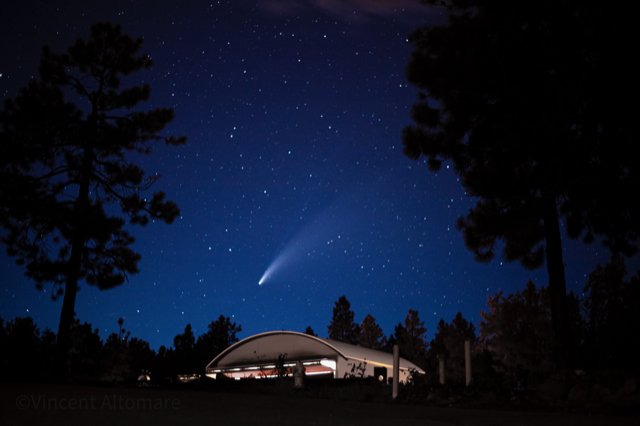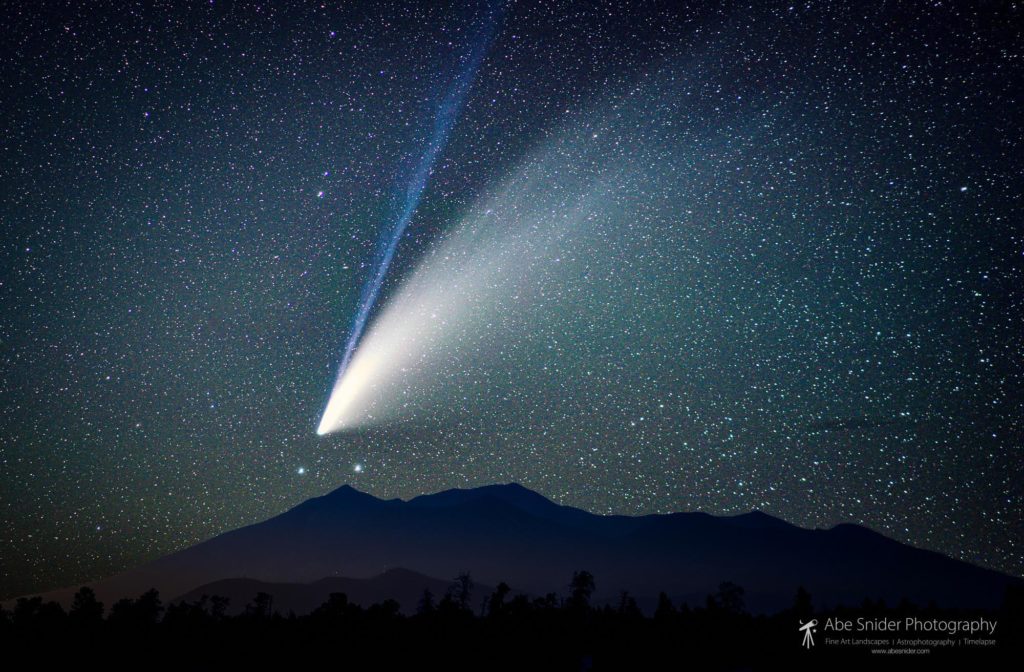
NEOWISE Seen above the San Francisco Peaks north of Flagstaff, AZ. Credit: Abe Snider
By Kevin Schindler, Lowell Observatory Historian
Comet NEOWISE has dramatically moved into the early evening skies this week. And while it is best viewed through binoculars, it may be seen without the aid of any such devices.
Comet NEOWISE made its closest approach to the Sun on July 3, when it passed within 27 million miles (43 million kilometers). Its closest approach to Earth will be on July 23, when it comes within 64 million miles (103 million kilometers). This is about 2/3 the distance from Earth to the Sun.
- Kyra Fern & Robert Brown
- Abe Snider
- Amanda Bosh
- Jim Cole
- Len Bright
- Michael West
- Stephen Levine
- Vincent Altomare
How to View Comet NEOWISE
Over the past week Comet NEOWISE was visible just before sunrise, low on the northern-eastern horizon in the constellation Auriga. Observers scrambled to see it as soon as possible, largely due to the general capriciousness of comets. For comets visiting the inner solar system, their volatile ices warm up as they approach the Sun. This can result in the development of spectacular tails. But this action can also cause the comets to break apart, turning much-anticipated comet visits into disappointing celestial fizzles.
Happily, Comet NEOWISE is still going strong and looks to offer a stunning evening show in the coming days. Still, it is not exceptionally bright. Lowell astronomer and comet expert Dave Schleicher said, “It’s not like you’re just going to glance up and, Oh wow, there it is! You need to have a good idea of where to look—and binoculars will help.” The adjoining finder chart, showing the position of the comet in the early evening sky over the next week, is thus a useful guide.
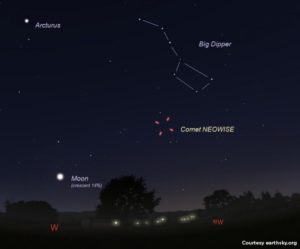 Comet NEOWISE will be visible low in the northwest, in the bottom reaches of the constellation Ursa Major. Note that while it changes position each day, it does not by any means “streak across the sky”. Its relative movement against the background stars is more akin to that of the Moon plodding across the sky (whose obvious motion is detected over hours or days) than that of a shooting star (whose obvious motion is seen in the timescale of seconds). In the chart, the vertical scale line to the right indicates 10˚ (degrees). This represents about the width of your fist held at arm’s length. This means that, at one hour after sunset, the comet will go from about one fist-width above the horizon on the July 15 to three above the horizon on the 23rd.
Comet NEOWISE will be visible low in the northwest, in the bottom reaches of the constellation Ursa Major. Note that while it changes position each day, it does not by any means “streak across the sky”. Its relative movement against the background stars is more akin to that of the Moon plodding across the sky (whose obvious motion is detected over hours or days) than that of a shooting star (whose obvious motion is seen in the timescale of seconds). In the chart, the vertical scale line to the right indicates 10˚ (degrees). This represents about the width of your fist held at arm’s length. This means that, at one hour after sunset, the comet will go from about one fist-width above the horizon on the July 15 to three above the horizon on the 23rd.
What’s in a Name
The full scientific designation of this “dirty snowball”, as American astronomer Fred Whipple nicknamed comets, is Comet C/2020 F3 NEOWISE. This name reveals a lot about the nature of this celestial visitor: The “C” indicates this is a non-periodic comet—the period is the length of time for a celestial object to orbit the Sun one time, so a non-periodic comet is one that either takes a relatively long time—thousands of years—to orbit, or never really does complete an orbit. In this case, scientists currently estimate the period at something in the range from 4500 to 6800 years.
“2020” indicates the year the comet was discovered and “F” reveals the half month of the discovery: “A” would indicate the first half of January, “B” the second half of January, and so on, with “F” signifying the second half of March (the exact discovery day was March 27). The “3” indicates this was the third such comet discovered in the second half of March 2020. Finally, NEOWISE denotes the discoverer, in this case a NASA space telescope. WISE, short for “Wide-field Infrared Explorer”, is an instrument launched in 2009 and initially used to discover asteroids and star clusters. An extended mission was ultimately added to search for near-Earth comets and asteroids—those whose orbits bring them close to Earth—that was called NEOWISE “Near-Earth Object Wide-field Infrared Explorer”.
To watch a recording of the live stream event, click below!
